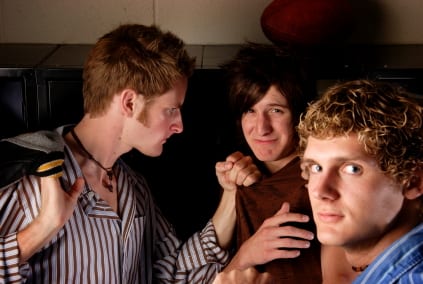 In New Jersey, a college freshman jumps off a bridge when his roommate “outs” him by webcam. In Massachusetts, a high school student gets on the wrong side of the mean girls, who torment her until she finally hangs herself.
In New Jersey, a college freshman jumps off a bridge when his roommate “outs” him by webcam. In Massachusetts, a high school student gets on the wrong side of the mean girls, who torment her until she finally hangs herself.
They are shocking stories that made national headlines- recent, if extreme, additions to what, for the past few years, has grown into a drumbeat warning of bullying among our youth.
Bullying. It’s become a buzzword in parenting and academic circles. The subject has become a contagion, spreading virally through the media. Principals are staging bullying interventions with students. Churches are hosting anti-bullying workshops for parents and their kids. We adults, desperate to stop cruel and seemingly inexplicable behavior by our children, have joined the crusade against what we perceive as a national epidemic. From classrooms to courtrooms, we’re designing ever-more-creative rules and penalties to keep our kids from behaving badly.
Bullying- the concept- has become public enemy number one. And that’s a good thing, right?
Not necessarily.
I think we’re focusing on the wrong thing by establishing the “bullying” label and applying punitive processes in order to create a state of civility.
Bullying exists; however, I think that bullying has become a much too-convenient label, used way too often. Like so many other labels tossed about, we throw it out and then are able to thoughtlessly apply some prescriptive process instead of truly dealing with the issue. When we’re focused on the label, we’re ignoring the real problem: the underlying behaviors and situations that need to be addressed.
By reducing myriad complex situations to the single word “bullying,” we devalue the term and end up with only punitive approaches (that don’t work, by the way). The same thing happened with “ADHD”; it became a generic term used for the sake of convenience to deal with any number of behavioral problems in the classroom in completely inappropriate ways. Next up: You child has an Austium Spectrum Disorder. But I digress.
It’s an atrocity. What, you say? It’s an atrocity when we permit a convenient label to blind us to the real problems in our schools and teens’ lives. The outcome might just be an increase in teen depression, self-medicating, or suicide; or has that already occurred?
So what can we do? Lot’s. Today I’ll only discuss Step One. We must apply a stricter definition to the term “bullying,” perhaps emphasizing specific repetitive emotional or physical behaviors. More and more often, I see single instances of rude, inappropriate or exclusionary behaviors- or sometimes simple quarrels- being labeled as bullying events. The result, of course, is that someone ends up with the “bully” label.
That’s a big problem, because the teenage brain loves labels. It gloms onto them, and teen neuro-programming can quickly turn this arbitrarily applied label into the teen’s perception of who he is and how he should behave.
If she wasn’t a bully before, now she’s programmed to become one. Oh great!





